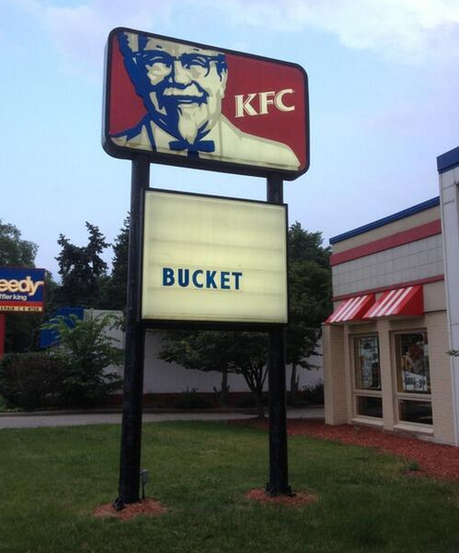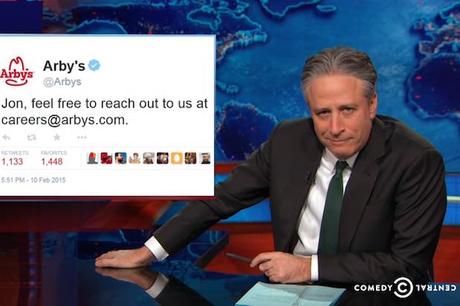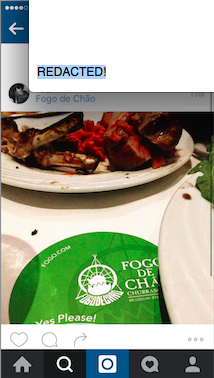 Human beings are not immortal, and therefore are not always the best choice for spokespeople—unless the current KFC campaign resurrecting the Colonel as an SNL alum turns out to work. Actually, it isn’t hard to imagine Norm saying “Bucket” and nothing else, just staring at the camera with nothing else to say. “…Bucket.” (To be honest, I don’t remember if I took this photo or got it off the web—if it’s yours, let me know and I’ll attribute the shot.)
Human beings are not immortal, and therefore are not always the best choice for spokespeople—unless the current KFC campaign resurrecting the Colonel as an SNL alum turns out to work. Actually, it isn’t hard to imagine Norm saying “Bucket” and nothing else, just staring at the camera with nothing else to say. “…Bucket.” (To be honest, I don’t remember if I took this photo or got it off the web—if it’s yours, let me know and I’ll attribute the shot.)
Every issue of Food & Drink since Summer 2011 has contained one of my columns. Here’s the latest one, from the Fall 2015 issue. (NOTE: The illustrations and videos are unique to this blog entry.)
Whether you’re a major chain, a one-off restaurant in the burbs, or the trendy venture of a serial investor with a marquee chef whose name makes people nod appreciatively, you’ve got something to say. Right?
You’ve got a proprietary process, a new idea, a craveable flavor or some kind of differentiation from the restaurants just up the way. Let’s assume you have a general idea why people like you.
Now what? Time for ads? Social media promotions? Slick packaging, stylishly rough-hewn décor, maybe some coupons in the local shoved-it-in-your-mailbox jumble-pack amongst the muffler shops and carpet cleaners? Word-of-mouth, as if people are constantly talking about restaurants their friends should try (some people are)?
WHO’S SPEAKING FOR YOU?
You might consider a spokesperson. It’s awfully tempting, especially if you’re a big chain. Think of all the restaurants that, in your opinion, are devoid of individuality and blend into the brand landscape, or brandscape, if you like jargon. I bet none have a spokesperson. That person standing or sitting there, speaking on your restaurant’s behalf, automatically imbues your business with a personality.
Red Robin has a customer-spokesperson, appearing regularly to say the things Red Robin would like customers to say—with a wry twist. Same with Sonic Drive-In, their driver-and-passenger buddies sitting where you sit at Sonic and enjoying both it and (in their amusingly warped way) each other’s company. That wry twist is key; otherwise, you really are just telling people what you wish they’d say.
Of course, you could let your founder speak like Dave Thomas for Wendy’s and the original, actual Colonel Sanders. Maybe you can find some kind of symbolic spokesperson, like the cows who vandalize Chick-fil-A billboards, or, um, Jared of Subway fame/infamy. You’ll note the problem with two out of three of those choices—in the Red Robin/Sonic example, there’s no problem at all. If there’s trouble of some kind, either from behavior or simple dying-on-the-job, you just move on.
Should the worst happen, you don’t even have to acknowledge the exit of actors portraying fictional customers, or servers, or cooks. Obviously, a real human whose name begins with “J” can really let you down. Cows are probably safe from scandal.
But what about the founder? Works great for a while. But when they die someday, typically the brand is adrift. Arguably the red-haired surrogate Wendy is the first time since Dave Thomas’s death that the brand found a memorable or consistent tone.
And right now we are watching a darkly humorous resurrection of Colonel Sanders unfold on our televisions, portrayed by (to date) two very different, well-known comedians. Since the Colonel’s death years ago, it’s arguable KFC exists on momentum alone – certainly not from a consistent, cohesive brand personality.
If your restaurant can’t afford broadcast, it’s tempting to consider social media. I believe the world will eventually produce young people who evolve to responsibly represent a business on social media, in real time, and do so within a branded tonality, for a reasonably small salary. So far that’s not really what happens.
If you’re small, the person most comfortable in the digital world does it. If you are medium, there is a good-natured young person posting specials and tributes to whatever day it is – not branded, not ownable, not interesting. If your company is huge enough to fund the enterprise, there are more possibilities.
Taco Bell does a good job with keeping social promotions human and engaging and not-as-cliché-as-most, but they run their social media “like a newsroom.” Big budget stuff.
DELIVERING YOUR MESSAGE
Here are some thoughts to help you sort it out:
1.IS YOUR FOUNDER TELEGENIC?
Here’s my thing with founder-driven ideas: in the long run the brand and the founder’s personality merge to the point that it’s easy to lose sight of the actual distinction between your restaurant’s true position and the one across the way. Bob Evans was a gimcrack pitchman. But he died, years ago, and their differentiating attribute went with him.
I think they’re still trying to tap into that gimcrackery—and it remains tricky to base the whole enterprise on the mannerisms of a ghost.
2.HOW ABOUT A FAUX FOUNDER FOR YOUR RESTAURANT?
Jack in the Box can age, even change actors, and still be the CEO-y leader of an amusing campaign.
Almost scandal proof. Same with the newly styled Ronald McDonald and too-too handsome Hamburglar McD’s. The only question with those rather strained efforts is, will anyone care?
Then there’s the King—Burger King’s divisive founder-in-creep. His constant expression of cheer as he stands in the center of photo ops, inexplicably hanging with one-percenters on their turf (Kentucky Derby, prize fights), amuses me personally and does raise Burger King’s profile.
As a marketer, I am highly critical of the fact that I have no idea what to make of that brand right now, veering as it does between anodyne product ads aimed apparently at ladies of a certain level of maturity and goofy chicken-fries ads for the younger demo.
Who are you under that mask, King? Are you mad?
3.HOW ABOUT A SPOKESTYPE PERSON—REAL OR SCRIPTED?
Just someone relevant to speak for you. When choosing a fake customer to speak for you, a word of advice: everyone knows it’s fake. Get a real person, or get a good writer who can script entertaining dialogue. Don’t enter the uncanny value of not-funny but not-actually real. Subway often lives there; Dairy Queen has been making trips into this territory. These “real” customers who speak in full sentences that include a product name aren’t convincing anyone, and they sort of say, “We thought you were stupid enough to think these were real people.”
A positive example of “real people” done convincingly is the original Domino’s pizza truth campaign—the chain’s employees were either real people, or amazing acting jobs. Let people be themselves or be actually funny, like the Red Robin lady.
4.HOW ABOUT AN ATTITUDE THAT YOU CAN CARRY ACROSS MEDIA?
If you’re going to get your star chef’s name out there, it’s probably only a few occasions. Budgets limit the best ideas. The rest of the time, typically, it’s up to social media.
But if you have a clear attitude, like Taco Bell or Arby’s, it’s easier for the community manager of the moment to stay “in character” as they interact with the social media world.

5.HOW ABOUT ONE OF THOSE ADVERTORIALS IN THE LOCAL RESTAURANT SECTION?
Those puff pieces are not bad, but neither are they compelling. Instead, cater the right event in well-marked packaging. Or (good luck) make a Chipotle-ish point on YouTube that gets shared on social media—the only requirement is that your message be interesting to people, not just to you. This is the age of authenticity (don’t pitch people) made compelling by a good story or way of doing business that makes the person sharing it look smart.
6.HOW ABOUT THE PEOPLE WHO CAME TO SEE YOU?
Can you help them pass the word-of-mouth without making them feel like a shill? But in reality, word-of-mouth is the chief, last resort of most restaurants’ budget-starved communications plan. The trick is to give people an easy, obvious thing to report. “The best burger I ever had with Havarti cheese on it.” “Soda made in the store.” “There’s an animatronic gorilla who beats his chest now and then.” It’s up to you to determine what could be a truly remarkable product or experience that people truly remark on—but do make it simple so people don’t have to work hard to repeat it.

Just be different and amazing to get good word-of-mouth. The Original Pancake House, The Cheesecake Factory, Fogo de Chão, a million local places—they give people such an experience on any given Saturday that the meal becomes the main reply to the co-worker’s question, “How was your weekend?” That’s a great media buy, and way more convincing than an actor you hired so you could film her saying what you want her to say. People want to know what you have to say. People love to eat. They don’t care about boring or phony communications. But they do take note of who’s delivering the message. Who is it?


COMMENTS ( 2 )
posted on 12 December at 22:50
Thank you a bunch for sharing this with all of us you actually realize what you're speaking about! Bookmarked. Please additionally visit my website =).
We could have a hyperlink exchange contract between us
posted on 05 December at 09:40
This post will assist the internet people for building up new web site or even a weblog from start to end.